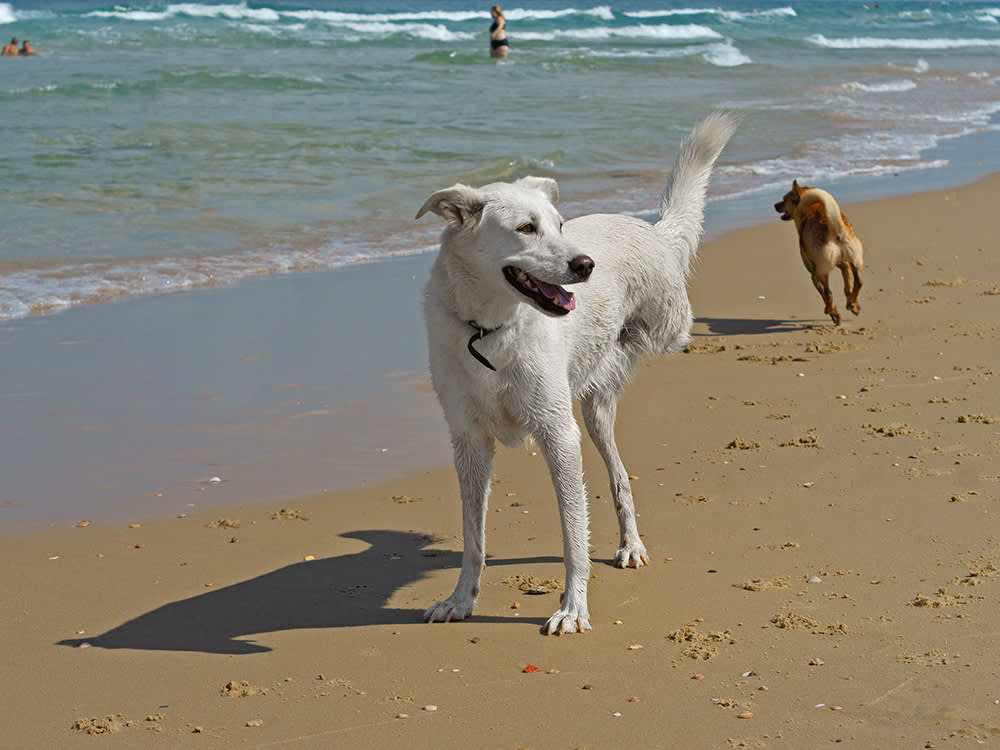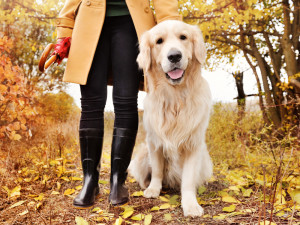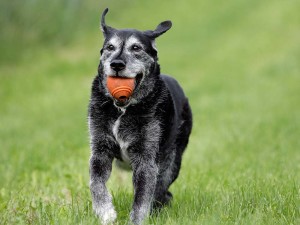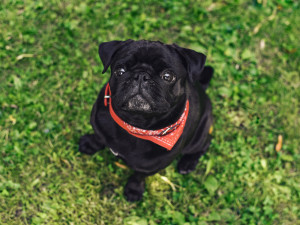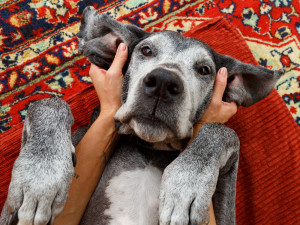How to Keep Your Three-Legged Dog Outpacing All the Other Pups at the Park
6 tips to help your tripod dog stay in tip-top shape.
If you’ve taken a three-legged pup to a dog park, you’re the first to know they can whip themselves around that dog run just as fast — if not faster — than the four-legged friends they meet there. While your speedy little tripod is definitely a champ, they might have taken some time to adjust to life without that fourth limb.
Some three-legged dogs do better than others, depending on their size (smaller dogs have it easier), age, and other physical problems.
Snap a pic of your pup’s teeth, and GREENIES™ will help you spot potential signs of oral health issues.
“The biggest challenge a dog faces when they lose a limb is that they have to relearn proprioception, which means they need to get a new idea of where their body is in space and how to balance,” says Sheila Wells, a hydrotherapist in Seattle.
Losing a front leg also poses a greater challenge than losing a back one.
How much do you spend on your pet per year?
“The front leg accounts for approximately 70 percent of the dog’s strength and balance,” says Wells. “So front-leg amputees often have a more difficult time adjusting to their new state. The rear can follow, but the front has to lead.”
Even if a three-legged dog lost their limb because of trauma or disease, most often they will bounce back and adjust. As Wells points out, dogs don’t have to face the same stigma that humans do around losing a limb.
“Some don’t ever notice their leg is missing,” she says. “Usually a leg that has been taken off has been painful for a long time and the dog is already used to not using that leg. When they get it removed, their whole demeanor changes because they can run around without being in pain. There’s no reason a three-legged dog has to be disabled.”
Here are six ways to keep your three-legged dog happy and healthy.
Keep an Eye on Their Remaining Legs
The most important challenge for tripod-dog owners, Wells says, is to protect the remaining limbs. Often people will let the dog overdo it, and that ends up putting undue stress on the dog’s joints, which can lead to injuries and arthritis. Help them out by putting a sock or pad on the “elbow” of the remaining legs to prevent calluses and pressure sores. Keeping your dog on a healthy diet and helping them maintain a lower weight also helps; there is less pressure on their joints.
Make Sure They’re Moving
Staying active is key for a three-legged dog. That can include any exercise your dog loves — from games of fetch at the park to regular walks around the block. But hitting the pool or another safe body of water is best because the water takes the stress off their body. See if there’s a provider in your area that offers swim therapy.
Don’t Let Them Overdo It
Monitor your three-legged dog’s activity level and don’t let them go overboard. You’ll want to keep a close eye on your tripod dog going up and down stairs or moving on other uneven surfaces, especially when they’re just starting out post-amputation and getting used to their new normal.
Ease Those Achy Joints
After an accident left Mastiff / Husky mix Harvey with a badly broken right rear leg, his owners knew amputation was the best choice. They try to keep Harvey from overexercising so that he doesn’t injure his remaining limbs, and they give him glucosamine for his joints. This, along with fish oils and other anti-inflammatory supplements, can do a lot for easing pressure on your dog’s remaining limbs.
Get In Gear
You may need to invest in a “wheelchair,” if necessary, to help with mobility, or look into prosthetics. There are options if a dog is missing a foot or two — or maybe three or four — and new advancements in prosthetics are made all the time. Martin Kaufmann, of OrthoPetsopens in new tab, makes prosthetics and orthotics for both “two-legged and four-legged animals and any variation in the middle.”
His goal is “to get the animal world up to speed with what we’re doing with humans.” He began his practice with animals four years ago, after a cousin’s Schnauzer suffered a stroke and lost use of their right front leg. Kaufmann began studying animal anatomy books and learned that the muscle and bone terminology in dogs is almost exactly what it is in humans. Now, 30 percent of his practice is making artificial limbs and braces for animals, mostly dogs. For front-leg amputations, you’ll also want to use a car seat harness with wide chest bands.
Call In the Experts
Along with talking with your regular vet, you’ll likely also want to connect with other providers who can help your three-legged dog with everything from assistive equipment to physical therapy. Check out these resources to help keep your dog at their best.
Animal Wellness and Rehabilitation Centeropens in new tab
Located in Bellevue, Washington, Dr. Tejinder Sodhi, DVM, CVC, offers holistic and naturopathic consultations for almost all disease conditions. Treatment options include acupuncture and chiropractic care for animals, physical therapy, Ayurvedic medicine, homeopathy, herbs, nutrition, and diet consultations. Dr. Sodhi is available for phone consultations; there is a charge for this service. Animal Wellness Center will make referrals to holistic veterinarians in your area.
Walkin’ Petsopens in new tab
Walkin’ Pets provides products, services and support for elderly, disabled, and handicapped pets. Their website features links to veterinarians and rehabilitation centers, articles pertaining to pet disability, a discussion board to support people who are caring for handicapped pets, and full descriptions of products available by mail order. These products include carrying slings, wheeled carts, stay-dry beds, healthy food supplements, and more.
Wellspringsopens in new tab
Swim therapy and massage promote rehabilitation, and Wellsprings in Seattle, Washington provides both to its canine clients. Licensed massage practitioner Sheila Wells works to build the dog’s confidence, increase range of motion, keep weight down, and increase circulation to the injured area. Wells is available for phone consultations and will provide referrals to those outside the Seattle area.
Doggon’ Wheelsopens in new tab
Doggon’ Wheels makes custom wheelchairs for disabled pets. Their website includes a detailed description of their products, ordering information and testimonials from people who have used their products.
Eddie’s Wheels for Petsopens in new tab
Eddie’s features custom-made carts designed and built to your dog’s measurements and specific needs. In addition to the basic rear-wheel cart, they design and build carts for front-leg disability, counterbalanced carts for those with weak forelimbs, and carts for amputees. Check out their charming website to see photos of some of their clients, including a dog with a ski wheelchair.
K-9 Cartsopens in new tab
K-9 Carts has been designing and building pet wheelchairs for 40 years. Their website includes a photo gallery, links to related organizations and tips on nursing care, as well as descriptions of their carts, harnesses, boots, therapeutic beds, and other products for the disabled pet.
OrthoPetsopens in new tab
Martin Kaufmann makes custom-fit orthotic and prosthetic devices for dogs and other animals. By distributing the dog’s weight more evenly, a prosthetic device can help protect the three-legged dog’s remaining limbs from arthritis and other conditions. The website includes photos as well as FAQsopens in new tab and links to other sites.
